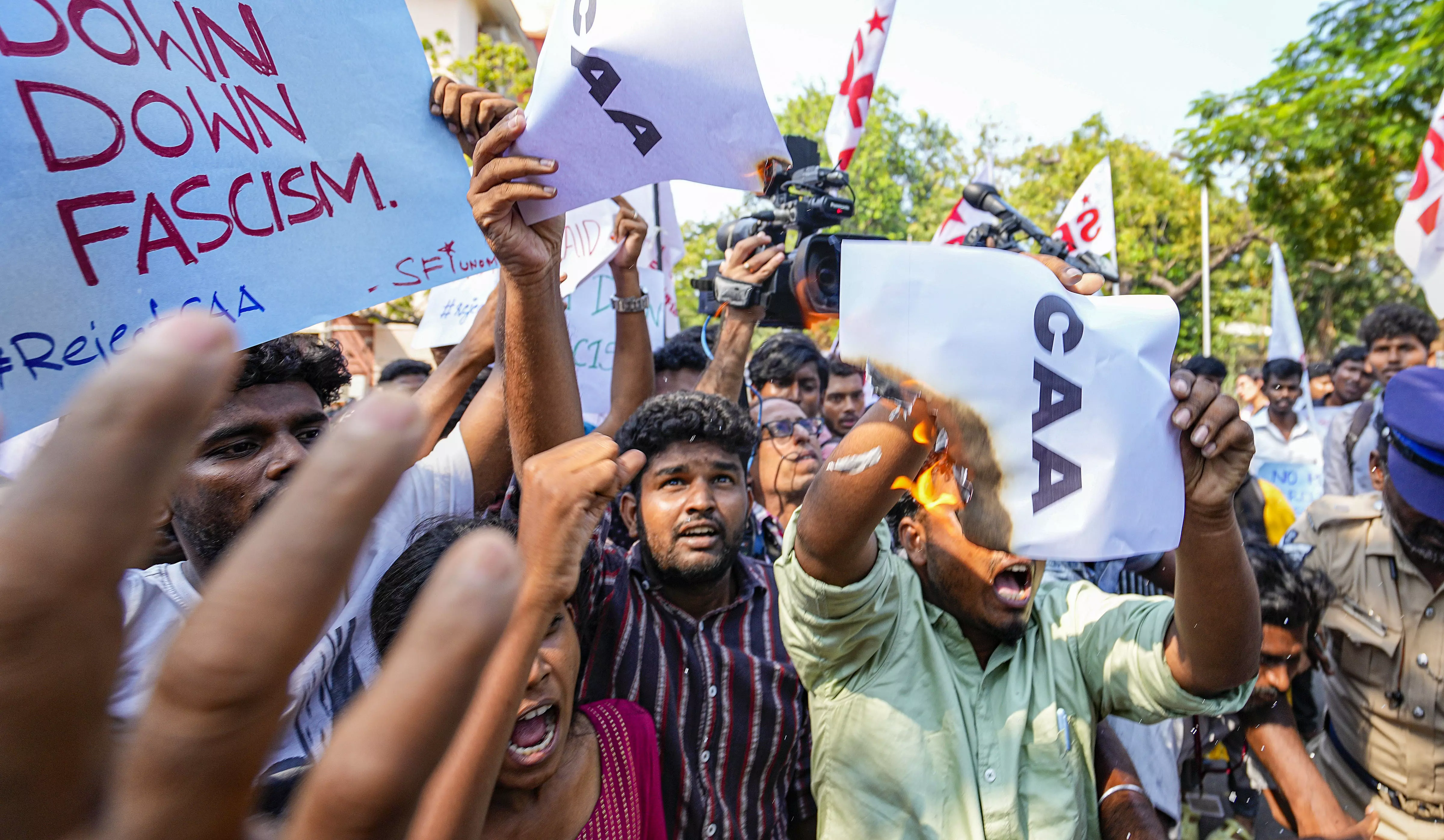
Celebrating CAA? Wait, not before you read the fine print
Legal experts and citizenship rights activists The Federal spoke to say the devil lies in the details or the criteria for citizenship laid out in the CAA rules

The Holi festival appears to have come early in Thakurnagar, the heartland of the influential Matua community in West Bengal.
Hundreds of men and women have been celebrating ever since the Modi government notified the rules for the implementation of the Citizenship Amendment Act (CAA) on Monday, March 11.
The CAA was enacted by Parliament in December 2019 to make “persecuted” Hindus, Sikhs, Buddhists, Jains, Parsis and Christians from Afghanistan, Bangladesh and Pakistan, who entered India on or before December 31, 2014, eligible for Indian citizenship.
Matua community
Many members of the Matua community of Bengal, who have migrated from Bangladesh, feel the implementation of the new citizenship law will fulfil their long-pending aspiration for Indian citizenship.
“This is a historic day for us. The rollout of the new citizenship law will not only help Matuas but all those who have migrated from Bangladesh due to communal tension. This is the fulfilment of Modi’s guarantee,” said Bijitkanti Mondal, a senior leader of the All India Matua Mahasangha.
Mondal, however, replied in the negative when asked whether he had gone through the rules notified by the Union home ministry.
Difficult documentation
Many legal experts and citizenship rights activists The Federal spoke to say the devil lies in the details or the criteria for citizenship laid out in the CAA rules.
“It will be very difficult for any migrant to get Indian citizenship fulfilling the criteria set in the rules of the CAA 2019 notified by the Central government,” said Shishir Dey, a lawyer and a former member of a Foreigners Tribunal.
He pointed out that document(s) required to prove that the applicant has entered India on or before December 31, 2014 as prescribed in the Schedule 1A of the amended law will be very difficult for any migrant to produce.
The proof
An applicant will have to submit either one of these nine documents listed in Schedule 1A:
(1) Copy of the passport issued by the government of Afghanistan or Bangladesh or Pakistan
(2) Registration Certificate or Residential Permit issued by the Foreigners Regional Registration Officer (FRRO) or Foreigners Registration Officer (FRO) in India
(3) Birth certificate issued by a government authority in Afghanistan or Bangladesh or Pakistan
Easy to procure?
(4) School certificate or educational certificate issued by a school or college or board or university authorities in Afghanistan, Bangladesh or Pakistan
(5) Identity document of any kind issued by the government of Afghanistan or Bangladesh or Pakistan or any other government authorities or government agencies in these countries
(6) Any license or certificate issued by a government authority of Afghanistan, Bangladesh or Pakistan
(7) Land or tenancy records in Afghanistan or Bangladesh or Pakistan
Parents, grandparents
(8) Any document that shows that either of the parents or grandparents or great grandparents of the applicant is or had been a citizen of one of the three countries; and
(9) Any other document issued by a government authority or a government agency in Afghanistan or Bangladesh or Pakistan which will establish that the applicant is from either of the three countries.
An applicant will also have to give a proof of their stay in India.
Bare minimum
Given the stiff provisions under the current law for applying for Indian citizenship, only 31,313 migrants belonging to six minority communities of Afghanistan, Pakistan and Bangladesh would be eligible for the application, said Manik Fakir of Damal Bangla, a citizenship rights group.
As per government data in 2019, since 1947 only 31,313 migrants belonging to six minority communities of the three above mentioned countries have declared to have been persecuted for their faith after migrating to India.
These are the registered migrants who have been given a long-term visa on the basis of their persecution claim by the Indian authorities.
The beneficiaries
Among the 31,313, according to a figure submitted by the Intelligence Bureau to a joint committee of parliament, 25,447 are Hindus, 5,807 are Sikhs, 55 Christians and two each Buddhists and Parsis.
"Those celebrating the framing of rules are ignorant about its actual content. They will soon realise how they have been fooled," Fakir said, adding that the Damal Bangla will intensify its awareness drive among the Matua community to dispel their misconceptions.
The law will also not benefit the migrants who have settled in the Sixth Schedule areas or a state in the north-east under the Inner-Line Permit Regime as these areas are exempted from the purview of the act, said Suhas Chakma, director of the New Delhi-based Rights and Risks Analysis Group.
Issues in the north-east
Thousands of Chakmas, predominantly Buddhists, and Hajongs, mostly Hindus, now settled in Arunachal Pradesh and other north-eastern states after being uprooted from the then East Pakistan, will not be eligible for Indian citizenship under the new law, he pointed out.
The experts also say cooperation of the state governments will be needed for implementing the act as the verification of the requisite documents will be vested on the district administration.
“The district level committee headed by designated officers, as may be specified, shall verify the documents submitted by the applicant along with the application,” according to the rules framed by the ministry.
Determining persecution
BJP leader Suvendu Adhikari, however, said the state governments will have no say in implementing the law, hinting that the committee might comprise only non-state government officials.
The rules are also silent on how the authorities will distinguish a “persecuted” migrant from an economic migrant.
